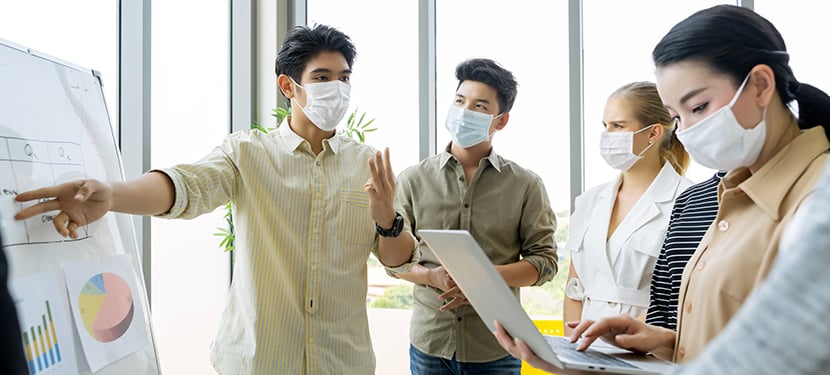Reducing Covid-19 Exposure by Proper Cleaning and Disinfecting in the Workplace will Help to Keep Everyone Safe
Outside of healthcare and paramedical facilities, infection prevention and control have not been common. With the recent Covid-19 pandemic, the need and demand for enhanced routine cleaning and disinfection procedures for all offices, warehouses, call centers, grocery stores, coffee shops, and other non-healthcare facilities is a critical step in reducing exposure and infections.
Studies have reported that some people infected with Covid-19 are “silent spreaders”, that is, either asymptomatic or pre-symptomatic, exhibiting no signs of fever, cough, or labored breathing. Therefore, all employers and employees must assume that workers will come to work while infectious. Enforcing social distancing, establishing administrative controls to minimize worker contact, and mandating the use of personal protective equipment (PPE) are all part of pandemic response.
See the OSHA COVID-19 Guidelines for more information on how to protect workers from potential exposures, according to their exposure risk.
With any new program that requires changes in daily behavior, it is important to encourage employees to embrace new policies and procedures with respect to reducing illness in the workplace. New procedures would include cleaning and disinfecting their workspace throughout the day, especially critical touch point like keyboards, computer mice, and personal cell phones. Educate employees on the importance of staying home if they are feeling sick or if family members appear to be ill with Covid-19 symptoms. Train employees on the importance of handwashing using soap and water for a minimum of 20 seconds as the first line of defense, and when soap and water are not close by, use hand sanitizer containing a minimum of 60% alcohol.
Remind employees that the important times to be diligent with hand washing are :
- Before and after work shifts
- Before and after work breaks
- After blowing their nose, coughing, or sneezing
- After using the restroom
- Before eating or preparing food
- After putting on, touching, or removing cloth face coverings
Download Printable Handwashing & Hand Sanitizing Signs Here
Use a tissue or napkin when coughing or sneezing and if those are not available use the inside of your elbow to contain and minimize debris. Immediately discard tissue into a no-touch trash container and wash hands using the 20 second rule as a guideline.
Refrain from using co-workers’ personal items such as phones, keyboards, equipment and personal workspace. Be sure to clean and disinfect co-workers’ space before and after if you must use those items. Social distance and maintain a 6-foot distance from each other and avoid large gatherings whenever possible.
Assemble a team to determine what needs to be cleaned and disinfected for communication purposes. Include employees, management and unions to determine critical touch points and high-use areas that pose the greatest likelihood of prolonged gathering and assembling.
Confirm your cleaning and disinfection practices are in compliance with Occupational Health and Safety (OSHA), Center of Disease Control (CDC), and other public health agencies.
Documented procedures – The team should approve and develop written cleaning procedure on critical touch points to be cleaned and disinfected at greater frequency within the workplace.
A workplace audit should include:
- An inventory of current cleaners and processes
- Identify critical touch points that require additional disinfection
- Evaluation of cleaning products, particularly disinfectants, and how they are diluted and distributed within the facility
- Cleaning cloths are laundered daily
- Laundering of floor mops (consider disposable system for best practices)
- Implement no-touch hand soap dispensers
- Touchless Instant hand sanitizer dispensers
- Increase ventilation rates.
- Ensure ventilation systems operate properly and provide acceptable indoor air quality for the current occupancy level for each space.
- Increase outdoor air ventilation, using caution in highly polluted areas. With a lower occupancy level in the building, this increases the effective dilution ventilation per person.
- Disable demand-controlled ventilation (DCV).
- Further open minimum outdoor air dampers (as high as 100%) to reduce or eliminate recirculation. In mild weather, this will not affect thermal comfort or humidity. However, this may be difficult to do in cold or hot weather.
- Improve central air filtration to the MERV-13 or the highest compatible with the filter rack, and seal edges of the filter to limit bypass.
- Check filters to ensure they are within service life and appropriately installed.
- Keep systems running longer hours, 24/7 if possible, to enhance air exchanges in the building space.
It is important to recognize enhanced cleaning frequency means an investment into the health and wellbeing of employees and customers. An increase in cleaning costs are associated with deeper and more detailed cleaning.
Some factors to consider when increasing cleaning frequency :
- Usage of the building. Is the facility open 9-5 or 24 hours per day?
- Number of inhabitants. How many visitors will be entering the facility daily?
As each of these variables increase, the demand and necessity of cleaning also increases. Another factor is the critical touch points and the frequency that each touch point is used. Prioritize those surfaces to be cleaned and disinfected more frequently.
Create a schedule of how often these surfaces should be cleaned each day, as well as the time of day particularly for facilities open longer than 9-5.
Proper cleaning products and protective equipment are critical to the cleanliness of the facility and the safety of the custodial staff and employees.
Download Printable Checklists Here
Ensure that supplies are available prior to each shift, in the quantities required, to execute the task effectively and with safety as the top priority. This includes using approved cleaners and fresh disinfectant diluted at the manufacturer’s recommendations and in compliance with EPA and CDC guidelines.
A comprehensive workplace audit provides documentation of current practices and where improvements can be made to ensure high levels of cleanliness and sanitation. Clean all visibly soiled surfaces first with soap and water before disinfecting surfaces.
Clean and Disinfect All Critical Touch Points with An Approved EPA List N: Products with Emerging Viral Pathogens AND Human Coronavirus claims for use against SARS-CoV-2 Disinfectant cleaner. These touch points include, but are not limited to, outside building door handles, inside door handles, elevator buttons, handrails, water fountains, computer screens, keyboards, computer mice, phones, toilets, toilet handles, bathroom stall handles and locks, taps, faucets, hand dryers, desks, chairs, tables, ATMs, vending machines.
Workplaces may wish to include additional critical touch points to the process based on experience and individual facility circumstances and design.
- Increase rate of cleaning/disinfecting in high use areas and critical touchpoints
- Adhere to EPA and CDC recommendations for use and reuse of cleaning supplies
- Follow EPA and CDC and other government approval processes, recommendations and directions for disinfection application procedures including contact times for disinfection
- Follow all cleaning label directions and use appropriate PPE (personal protective equipment)
- Keep all cleaners properly labelled and away from public.
Resources
Occupational Safety & Health Administration




